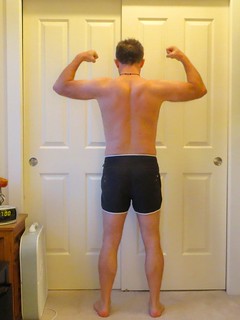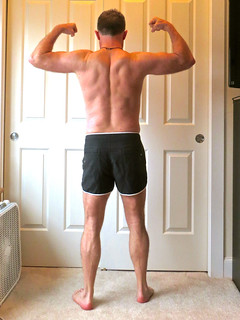I have a good life, but in some ways the past couple of years have been a struggle. I’ve gone from being very productive almost every day to being hardly ever productive on any day. I can’t focus. I start one project but quickly lose interest and am distracted by something else that needs to be done. As a result, nothing ever gets finished. I’ve been mired in creative quicksand.
A Problem
Meanwhile, I’ve noticed some other disturbing character quirks. I’ve always had some memory issues. Kris used to call me Mr. Short-Term Memory (after this Saturday Night Live skit with Tom Hanks) because I’d often forget things she had told me. (To my credit, I often remembered things she didn’t.) In the year that we’ve been dating, Kim too has expressed frustration with my memory. Even when I intentionally focus on what she’s telling me, I’ll sometimes forget what she says.
And over the past year, I’ve developed a strange habit: I leave doors and drawers open. This first became apparent when I began spending time at Kim’s house. “Why did you leave the microwave open?” she’d ask. Or, “Did you mean to leave your toothbrush out?” I was mortified when these things happened because I was trying to make a good impression. Then the same thing began to happen at home, in my apartment. I’d come into the kitchen and two cabinet doors would be open. Since I was the only one in the house, I was obviously the one who’d forgotten to close them, and it baffled me.
Plus, of course, there are the constant messes. I’ve always been messy, but the piles seem to have grown out of control over the past couple of years. My desk is constantly cluttered. Right now, I have an entire room in my condo devoted to crap that I need to sort.
Oh, and did I mention I procrastinate constantly? I do.
Lately, things have come to a head. I’m working on some big project, projects in which I’m part of a team. I have a long list of things that need to get done, both for these projects and for my own work. I have a tough time prioritizing. I’m overwhelmed by it all. I pick things from my to-do list at random and get them done, but often the things I choose are chores like “Buy bird feeder” instead of “Reply to WDS speakers”. As a result, the people I’m working with have been very frustrated, and I don’t blame them.
Note: One of my greatest frustrations over the past few years is the fact that I can no longer read. I used to love to sit down with a good book and lose myself in its pages. But for maybe five years now, I haven’t been able to do that. I don’t have the attention span. I try to read, but after a few pages, my mind has wandered, and I’m thinking of something else to do. I miss reading for pleasure, and I miss reading for work.
An Answer
In November, I started seeing a therapist. After only three sessions, she suggested that perhaps I have a mild case of ADHD. A month later, she suggested that I talk to my doctor about ADHD/ADD meds. And three months after that, she changed that from a suggestion to a command.
She spent an entire session giving me tips on how to cope with ADHD, how to be less messy, how to prioritize tasks, how to pay attention. She also told me to go see my primary care physician and request one of three drugs.
I met with my doctor on Tuesday, and he listened to me talk about my therapy sessions. I showed him the notes I’ve taken. (If I didn’t take notes, I’d forget what we talked about…because I’m ADHD.) He listened to me carefully, and then agreed to prescribe a low dose of Vyvanse. “But I don’t like doing this,” he said. “This stuff can be addictive. It’s not as bad as Adderall, but it can still cause problems. There are a lot of side effects. For instance, you’re not going to want to eat. Also, you may not sleep well. Try it as your therapist recommends, but I want you to come see me in a month so we can talk about how it’s affecting you.”
ADHD Tips and Tricks
I filled the prescription, but then had second thoughts. I did some research on the internet about how to cope with ADHD without using drugs. The Vyvanse website itself has a list of 10 tips for adults with ADHD. I also liked this list of tips for managing symptoms and getting focused and, especially, this list of 50 tips on the management of adult attention deficit disorder.
Reading through these articles, I found a number of gems, such as:
- Organize at home with a “launch pad” where I can collect keys, glasses, wallets, etc. This is something I’ve had to teach myself to do. When I don’t put my stuff in the “launch pad”, they’re as good as lost.
- Practice the 10-minute pickup. Every evening, spend ten minutes quickly tidying the house. I don’t do this, but I should. I want to make it a routine before bed.
- Kill clutter. Clutter is the enemy of the ADHD mind. When my desk is cluttered, I feel overwhelmed. Each piece of paper represents an incomplete action, something that I need to get done. If I can keep the clutter and disorganization to a minimum (by using a physical inbox, for instance), I can feel less overwhelmed and stay on task better.
- Exercise, eat right, and get plenty of sleep. When I posted about my ADHD on Facebook, I received 41 response from folks sharing their tips for dealing with ADHD. The top recommendation was to adhere to smart physical fitness. For the most part, I do this already, but I could be better.
- Impose external structure on my life. One of the best ways for ADHD people to get control of their lives is to create some sort of formal structure. Make schedules. Make lists. Develop rituals. Keep file folders. Etcetera.
- Carry a notebook. People with ADHD have too many things in their head, so they’re not able to focus on one thing at a time. They get distracted by new thoughts and ideas. By carrying a notebook at all times, I have the chance to do a braindump whenever something new occurs to me. This is a habit I’ve had intermittently for many years, but I need to make it something I do always.
- Make lists. In the past, I’ve noticed that I’m much more productive when I have a to-do list. Again, I’ve made these lists intermittently in the past, but I need to make them a part of my regular routine.
- Meditate. So many people, from my therapist to my girlfriend to my blog readers, have recommended that I learn to meditate. I’ve tried in the past, but only half-heartedly. I don’t have the patience because — surprise! — meditation is tough for the ADHD mind. Still, it’s an important skill, and I want to learn to do it.
- Listen actively and patiently. Repeat information. Perhaps the part of ADHD I hate most is the memory problem. I feel terrible when I forget things Kim tells me. (I used to feel bad when I forgot things Kris told me too.) I want to be a good partner for her, and when she has to repeat requests or retell stories, I feel like a fool. Being a better listener should help with this. (Though, as I’ve said, I already try hard to listen well.)
- Create reward systems. This sounds so juvenile, but the experts seem certain that one great way to stay on task is to set up a system of rewards for getting work done. So, for example, I might allow myself to watch an episode of The Big Bang Theory whenever I finish a writing assignment. Or I can give myself permission to walk to lunch at Jade Teahouse if I finish a big project.
- Own your behavior. One final important tip: Don’t use ADHD as an excuse for being a flake. When you forget something, own it. When you don’t get work finished, admit it, and do better next time. Don’t use the ADHD as a cop-out. Acknowledge that it’s there, but also realize you’ve got to be a productive member of society and a good partner.
I liked these tips (and more besides), but after reading them, I was still feeling overwhelmed. There’s so much I need to do in order to start being productive again. Where do I begin?
I emailed my therapist. Meanwhile, both Kim and another friend cautioned me against overthinking things. (Another symptom of ADHD!) Miguel and Kim were right: I was overthinking things, as I often do. So, when my therapist told me to take start taking the meds, I complied.
Wow. I’m glad I did.
A Future
I was worried that the Vyvanse would make me edgey and irritable, that I’d feel anxious and nervous. When I take pseudophedrine for allergies, I often…well, I often freak out. It’s like having way too much caffeine, and I feel overwhelmed. Since Vyvanse (and other ADHD meds) are similar, I was afraid I’d suffer from the side effects.
I didn’t.
Instead, I gradually felt calmer. I felt more confident in myself and more in control of my surroundings.
For instance, I took my Vyvanse this morning at 7am and then climbed into the bathtub to read this month’s book group book (The French Lieutenant’s Woman). At first, I was distracted. I couldn’t focus on the page in front of me. I kept reaching for my iPhone to look at email and Facebook. I picked up an issue of Men’s Health. But after about half an hour, my mind had settled. I felt calm, both physically and mentally.
I didn’t want to read, so I got out of the bathtub, shaved, dressed, and got to work. I pulled out a dry erase board and created an “ADHD Command Central” on which I listed all of the things I need to do, broken into three categories based on priority level. Top on the list? “Write for More Than Money”!
Perhaps more to the point, I then sat down and wrote this post from start to finish without a break. I didn’t once flit away to check Facebook or email. I didn’t get up to pour another cup of coffee. I didn’t suddenly remember that I needed to do laundry. I didn’t get distracted by the stack of stuff in my physical inbox. I just wrote. And here I am, more than two thousand words later, almost finished with this article. And it only took me an hour to write.
This is the old J.D. This is the productive J.D. This is the J.D. who gets shit done. I like it.
I’m not excited about the idea of remaining medicated long term, but after a day and a half of using Vyvanse, I’m willing to stick with it for at least a little while. If it helps me be productive, then I’m all for it. And if it helps with my personal relationships, that’s even better.
 Poor sleep is nothing new for me. In 2005, when I was fifty pounds overweight, I was diagnosed with sleep apnea. For the next several years, I strapped on a C-PAP machine every night. I was amazed at how better breathing led to better sleep.
Poor sleep is nothing new for me. In 2005, when I was fifty pounds overweight, I was diagnosed with sleep apnea. For the next several years, I strapped on a C-PAP machine every night. I was amazed at how better breathing led to better sleep.








